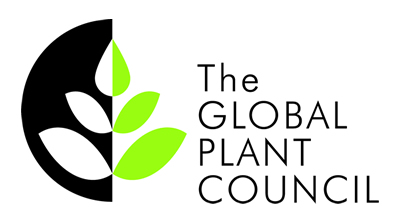Open Lectures
View or recommend open access research lectures to your students as further information on a plant science topic.

These open access research lectures were delivered at the Gatsby Plant Science Summer Schools by leading plant scientists about their research. The talks are deliberately pitched at a level to engage undergraduate students. The research lectures cover a broad range of cutting-edge plant science research that address globally relevant applied initiatives as well as curiosity-driven research. These online research lectures have proved popular with undergraduates. More lectures can be viewed through the Plant Science TREE
Translation of Educational Resources. We are currently working in partnership with the Global Plant Council and plant science volunteers to translate undergraduate research lectures that are curently available in English into other langauges, so as to widen their global reach.
![]()
![]()
![]()
![]() Italian, Spanish and Portuguese transcripts are now available for selected lectures . To download translated transcripts please select the relevant lecture below and click on the flag.
Italian, Spanish and Portuguese transcripts are now available for selected lectures . To download translated transcripts please select the relevant lecture below and click on the flag.
Summer School lecture by Professor Sir David Baulcombe
Abstract Most inheritance is determined by the sequence of A,C,G and T in an organism’s DNA. Changes to this sequence by mutation affect the encoded proteins or gene expression. There is, however, another layer of information that is transmitted between cells and, in some instances, between generations. These systems are often referred to as “epigenetic” or soft inheritance. “Epigenetic” because they are based on an information content that is outside the DNA and “soft” because epigenetic effects can be established or lost more easily than mutations. In my talk I will describe how research on viruses shed light on the involvement of RNA and DNA methylation in soft inheritance. It is a story that involves an immune system in plants, movement of RNA between cells and hybrid vigour. There are practical implications in agriculture and medicine and it raises questions about the mechanisms of evolution. Speaker Profile I am Professor of Botany at Cambridge University and one of my predecessors was J.S.Henslow – Darwin’s tutor. My present research is into the mechanisms of soft inheritance, as I will describe in my lecture, although in the past I have been interested in plant hormones, viruses and disease resistance. I was led into these subjects because one of my tutors recommended that, if I intended to follow a career in research, I should choose an important topic. In 1973 when I started my PhD, I thought that the most important topic in biology was understanding how genes are regulated. My various research interests since then have always involved different ways of looking at that problem. |
Summer School lecture by Prof Alistair Hetherington
Prof Alistair Hetherington, University of Bristol Abstract Speaker Profile
|
Summer School lecture by Prof John Christie
Prof John Christie, University of Glasgow. Abstract Speaker Profile I am currently Professor of Photobiology and Deputy Head of the Institute of Molecular Cell and Systems Biology at the University of Glasgow. My research interests centre on using diverse approaches, ranging from biophysical to physiological, to understand how photosensory systems operate to shape plant growth and development. Our research has resulted in major advances in the field of photobiology, including the identification of the long sought after photoreceptor for phototropism and more recently the elusive plant UV-B photoreceptor. Our work also extends to developing new optogenetic tools to non-invasively track bacterial and viral infections and control neural processes by using light. I also serve on the editorial board for several plant science journals, contribute to scientific textbooks and will chair the 2016 Gordon Research Conference on Photosensory Receptors and Signal Transduction. |
Summer School lecture by Prof Sarah O'Connor
Professor Sarah O'Connor, John Innes Centre ABSTRACT SPEAKER PROFILE: |
Summer School lecture by Professor Ottoline Leyser
Professor Ottoline Leyser, CBE, FRS, Sainsbury Laboratory, Cambridge Abstract Speaker profile Ottoline Leyser is Professor of Plant Development and Director of the Sainsbury Laboratory at the University of Cambridge. Her research focuses on understanding how plants adapt their growth and development to suit the environment in which they are growing. In particular she is interested in how plants balance and rebalance growth across their shoot systems and between their shoots and roots in response to changing nutrient availability. Professor Leyser received her BA (1986) and PhD (1990) in Genetics from the University of Cambridge. After a period of post-doctoral research at Indiana University, she returned to the UK and took up a Lectureship at the University of York (1994), where she worked until moving to the Sainsbury Laboratory, University of Cambridge, in 2011. She is a Fellow of the Royal Society, a Member of EMBO and a Foreign Associate of the US National Academy of Sciences. She was awarded a CBE in the 2009 New Year Honours list and the 2016 Genetics Society Medal. |
Summer School lecture by Professor David Salt
Professor David Salt, University of Aberdeen |
Summer School lecture by Prof Giles Oldroyd
Prof Giles Oldroyd, John Innes Centre. |
Summer School lecture by Prof Johnathan Napier
Prof Johnathan Napier, Rothamsted Research.
Fish oils and seeds for healthy foods.
Gatsby Plant Science Summer School 2014 |
Summer School lecture by Prof Steve Long
Professor Stephen Long, University of Illinois: Food, Feed and Fuel from Crops under Global Atmospheric Change. Could we have it all in 2030? Gatsby Plant Science Summer School Lecture 2014 Abstract Speaker profile: |












 Translation Initiative in partnership with
Translation Initiative in partnership with 